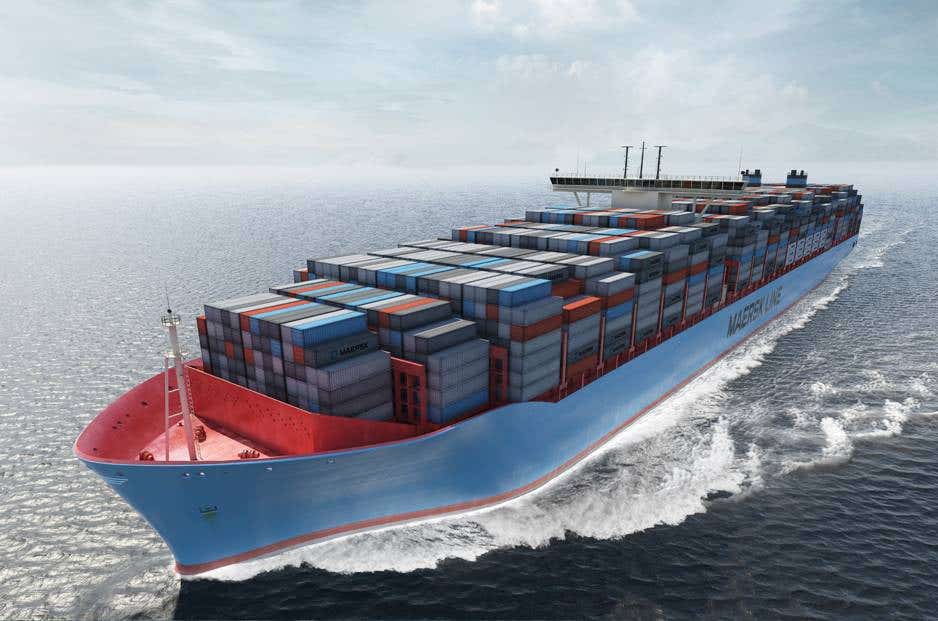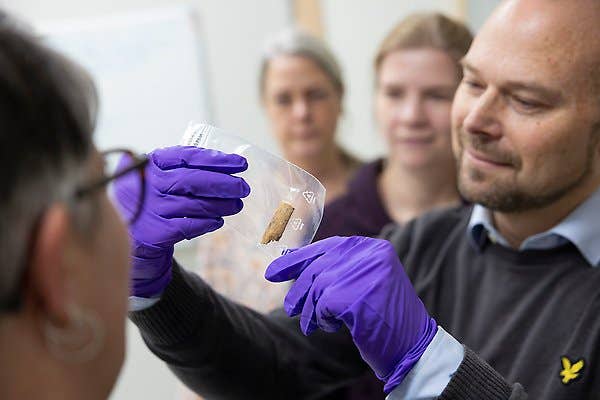Ship traffic releases large amounts of methane from the ocean into the atmosphere
Ships stir methane trapped beneath shallow waters, releasing it into the air. A Swedish study finds these hidden emissions could be a major climate risk.

Ship traffic releases hidden methane from seafloors, adding to greenhouse gases, Chalmers University researchers reveal. (CREDIT: CC BY-SA 4.0)
Ships do more than carry goods across the world. They also disturb what lies beneath. A study from Chalmers University of Technology in Sweden reveals that when ships move through shallow waters, they can release large amounts of methane. This greenhouse gas is 27 times more powerful than carbon dioxide at trapping heat.
Researchers noticed that ship traffic can generate methane emissions up to twenty times higher in busy lanes compared to calm areas nearby. The study took place in Neva Bay, a shallow part of the Baltic Sea. Scientists first discovered this by accident while measuring other gases.
Amanda Nylund, a researcher from Chalmers and the Swedish Meteorological and Hydrological Institute, explained, “Our measurements show that ship passages trigger clear pulses of high methane fluxes from the water to the atmosphere. This is caused by pressure changes and mixing of the water mass. Even if the pulses are short, the total amount during a day is significant.”
Methane often forms in muddy, oxygen-free layers at the bottom of shallow coastal areas. When a ship passes over these areas, it changes the pressure on the seafloor. That sudden drop lets methane bubbles escape into the water. The churning of the water behind ships also pushes the gas quickly to the surface, where it leaks into the air.
All Ships Contribute to Emissions
Many worry about methane leaks from ships that use liquefied natural gas (LNG) as fuel. But this study found something different. The methane emissions did not come from ship fuel at all. Instead, they were from the seafloor. This means that all ships – no matter what they run on – can cause these emissions just by moving through shallow water.
Johan Mellqvist, Professor of Optical Remote Sensing at Chalmers, said, “The discovery of the hitherto unknown impact of ships is important for improving global estimates of methane emissions, not least considering that nine of the world's ten largest ports are located in waters with similar conditions as Neva Bay.”
Related Stories
- Millions at risk: 28 major U.S. cities are sinking
- Ferrari’s new Hypersail yacht: Flying across oceans without fuel
- New flaxseed feed helps reduce methane in cow burps
Researchers studied cruise ships, container ships, ropax ferries, and bulk carriers. Cruise and container ships caused the most frequent and largest methane releases. Ropax vessels, which carry both people and vehicles, also released large amounts. Bulk carriers, which are larger, had lower emissions. Rickard Bensow, Professor of Hydrodynamics at Chalmers, suggested that ropax ships may cause higher emissions because they often have double propellers, increasing the disturbance in the water.
The Science Behind The Plumes
Methane is the second most important greenhouse gas for global warming. Around half of methane emissions worldwide come from human activities, with a large share also coming from aquatic systems. Coastal areas and estuaries are major natural sources, but ship traffic can increase this effect.
In shallow water less than 10 meters deep, bubbles from the seafloor often reach the air before dissolving. Even in deeper water, ships mix the water so much that more methane escapes to the surface than normal. Turbulence from ship wakes can reach depths of over 18 meters.
Field measurements in Neva Bay showed 464 ship plumes, with nearly half meeting quality standards for analysis. Of these, about 28% showed significant methane releases. Cruise and container ships triggered emissions in 77% and 76% of their passages. For ropax vessels, the number was 56%.
In 2012, the Neva Bay shipping lane had weak thermal layering with oxygen saturation between 80 and 90%. The methane flux in the shipping lane reached 11.1 mmol per square meter per day. This was ten to one thousand times higher than typical global estuarine or coastal fluxes. In fact, ship-triggered methane releases in the bay added about 22% more carbon dioxide equivalent to the atmosphere compared to emissions from ship exhaust alone.
Global Implications and Next Steps
The researchers believe their findings could change how methane emissions are calculated worldwide. Many of the world's largest ports, such as those in China, Singapore, South Korea, Rotterdam, and Antwerp, have similar shallow conditions as Neva Bay. These areas may also be underreporting their methane emissions.
Ida-Maja Hassellöv, Professor of Maritime Environmental Science at Chalmers, plans to lead a new study this autumn. “The next step is to estimate how large these effects can be globally,” she said. Her team wants to examine ports in river deltas where natural methane production is high and ship traffic is dense.
Ships affect methane release in many ways. Their wakes mix the water, allowing methane bubbles to rise. Their mass and speed change the water pressure beneath them, squeezing gas out of sediments like air from a sponge. They also create turbulence that keeps the methane from dissolving back into the water, letting it reach the surface.
Researchers used a floating flux chamber attached to a cavity ring-down spectrometer to measure emissions. They also used computer simulations to model how different ships disturb the water. The daily methane emission in the measured section of Neva Bay reached 120 kilograms, with an average of 0.2 grams per square meter per day.
A Call to Action
This research shows that current methods of measuring methane may underestimate emissions in busy ports. While methane slip from LNG engines is a known issue, this hidden source has been ignored. As the world looks for ways to limit greenhouse gases, better understanding of such processes is critical.
Ships are essential to the global economy. They carry food, fuel, and materials across oceans. Yet, their environmental impact goes beyond exhaust pipes. Even if ships become cleaner in terms of fuel use, their movement through shallow waters can still harm the climate by releasing methane.
This new knowledge can guide decisions on port placement, shipping routes, and environmental monitoring. It also shows that human activity affects natural processes in ways scientists are still discovering.
The study, published in Nature Communications Earth & Environment, highlights the need to rethink how emissions from shipping are calculated and how to manage them.
Note: The article above provided above by The Brighter Side of News.
Like these kind of feel good stories? Get The Brighter Side of News' newsletter.



